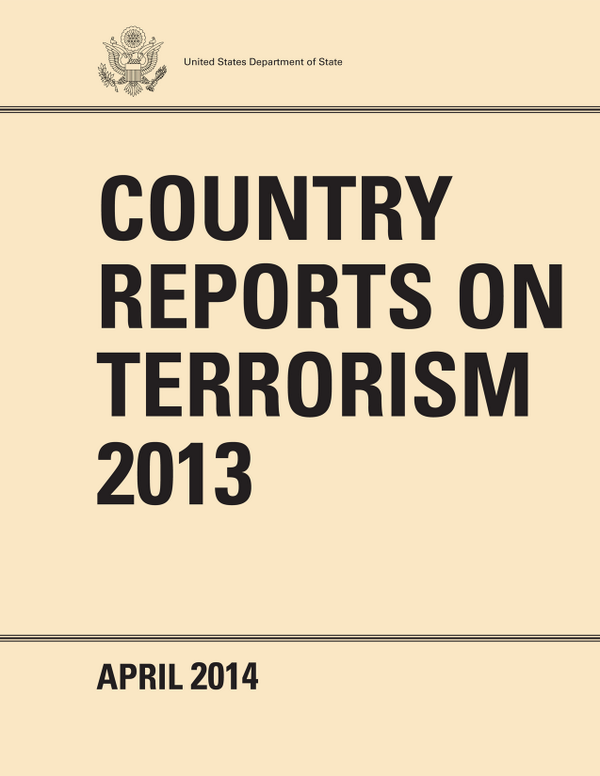Today, the U.S. Department of State released the congressionally mandated report, "Country Reports on Terrorism 2013." The report includes an Annex of Statistical Information prepared by the National Consortium for the Study of Terrorism and Responses to Terrorism (START). START contributed the annex for the U.S Department of State’s 2012 version of the report as well. 
The Annex of Statistical Information is a summary of worldwide terrorist activity as reported by unclassified sources. In the statistical annex, START describes the 2013 patterns of worldwide terrorist activity with respect to changes during the year, geographic concentration, casualties, perpetrator organizations, tactics, weapons and targets.
The 2013 statistical annex documents 9,707 attacks worldwide. These attacks resulted in more than 17,800 deaths and 32,500 injuries. In addition, more than 2,990 people were kidnapped or taken hostage. On average there were 808.91 attacks per month and 1.84 fatalities and 3.36 injuries per attack, including perpetrator casualties.
According to the annex, the 10 countries that experienced the most terrorist attacks in 2013 are the same as those that experience the most terrorist attacks in 2012.
Although terrorist attacks occurred in 93 different countries, they were heavily concentrated geographically. More than half of all attacks (57%), fatalities (66%), and injuries (73%) occurred in Iraq, Pakistan and Afghanistan. By wide margin, the highest number of fatalities (6,378), attacks (2,495) and injuries (14,956) took place in Iraq. The average lethality of attacks in Iraq was 40 percent higher than the global average and 33 percent higher than the 2012 average in Iraq.
Information about the perpetrator group responsible was reported for 32 percent of terrorist attacks in 2013. Of those attacks, more than 20 percent were attributed to the Taliban, operating primarily in Afghanistan. In addition to carrying out the most attacks, the Taliban in Afghanistan was responsible for the greatest number of fatalities in 2013.
The 10 most active perpetrator groups of 2013 include: the Taliban (641 attacks); al-Qaida in Iraq/Islamic State of Iraq and the Levant (401 attacks); Boko Haram (213 attacks); Maoists (India)/Communist Party of India-Maoist (203 attacks); al-Shabaab (195 attacks); Tehrik-i-Taliban Pakistan (TTP) (134 attacks); New People’s Amy (NPA) (118 attacks); al-Qaida in the Arabian Peninsula (AQAP) (84 attacks); Revolutionary Armed Forces of Colombia (FARC) (77 attacks); and Bangsamoro Islamic Freedom Movement (BIFM) (34 attacks).
The 2013 report marks the second year the statistical annex was provided by START. In preparation for compiling the statistical annex for 2012, START's Global Terrorism Database (GTD) team developed new tools to improve the efficiency and thoroughness of its data collection process and evolve its data collection methodology to improve the reliability, efficiency and thoroughness of the process. The dataset used to generate the statistical annex is a subset of the GTD, based on a more narrow definition of terrorism that is consistent with that used by the Department of State.
As a result of these improvements in data collection methodology for the GTD and definitional differences between the GTD and the statistical annex dataset, the statistics in this report are not directly comparable with the GTD or data from previous reports. START's GTD team continues to collect information about additional descriptive variables for 2013 terrorism incidents and will release the updated GTD later this summer.
